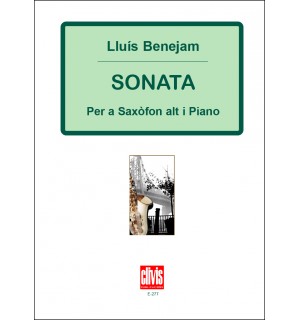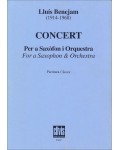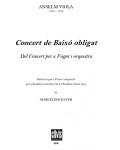
No products
Prices are tax included
Product successfully added to your shopping cart
There are 0 items in your cart. There is 1 item in your cart.
- English
- Castellano
- Català
Sonata for alto sax and and piano
E277
New product
This piece clearly shows post-impressionist traits, modal turns of phrase, a wealth of registers, a constant rhythm, a taste for chromatic modulations and a mastery of counterpoint. Although the alto saxophone is undoubtedly the protagonist throughout the piece, the piano is not restricted to an accompanying role but is instead clearly involved in the dialogue with the soloist.
| Period | 20th c. |
| Subheading / Parts | Allegro deciso - Andante - Allegro apassionato |
| Instruments | sx.a.,pno. |
| Pages | 52 |
| Time | 16 min |
| Contents | score + part |
| ISMN | 979-0-3502-0568-2 |
| Edition | Printed |
Lluís Benejam composed five sonatas in his career, all of them for solo instrument and piano. The first three, written in Barcelona in the 1950s, were written for the violin, the viola and the cello respectively. The fourth one was also written for the violin (Birmingham, 1959) and the fifth and last one is the 1964 work Sonata per a saxòfon i piano (Sonata for Saxophone and Piano). This piece, one of the author’s most brilliant, clearly shows the different elements which define his language: post-impressionist traits, modal turns of phrase, a wealth of registers, a constant rhythm, a taste for chromatic modulations and a mastery of counterpoint. Although the alto saxophone is undoubtedly the protagonist throughout the piece (with parts of great prowess), the piano is not restricted to an accompanying role but is instead clearly involved in the dialogue with the soloist.
In 1967, Lluís Benejam orchestrated this sonata, converting it into a saxophone and orchestra concerto (Concert per a saxòfon i orquestra). The European premiere of this concerto was performed in Barcelona in 1994 with Miquel Bofill as soloist, accompanied by Barcelona Symphony / National Orchestra of Catalonia, the ensemble which made the world’s first recording of the piece, with John Harle on the saxophone.
David Puertas









